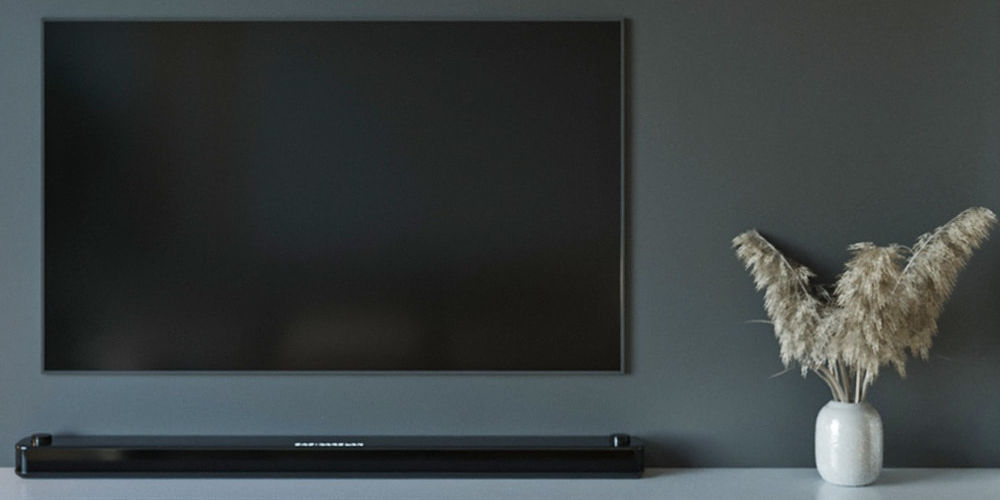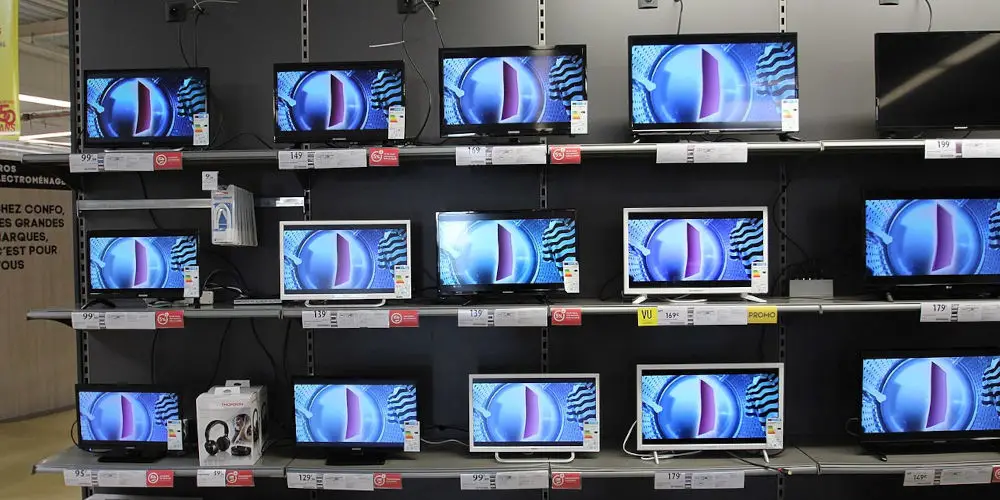How to decipher common TV acronyms

It doesn’t take long when buying a new television for you to discover models are being described in what feels like a completely different language. So, you might want a guide to the majority of common TV acronyms. Luckily, this article aims to provide that for you!
We’ll cover the basics terms and a few more advanced acronyms. So if you don’t know your OLED from your HDMI or HDR10+, you will shortly!
What is resolution?
When flat panel TVs began appearing on the market, we noticed the word HD, short for High Definition. It’s to do with the number of pixels on the screen. If you get super close to your TV, you’ll see dots. Those are pixels! We measure how good a TV is by the amount of pixels it displays.
Let’s look at the most common TV resolution terms in use today.
HD (High Definition)
An HD screen has 720 lines of pixels from top to bottom of the screen and there are 1280 across the top. So, the resolution is 1280 x 720.
Full HD (Full High Definition)
Taking things to the next level, Full HD uses 1080 rows of pixels from the top to the bottom of the screen. There are 1920 pixels across the screen from left to right. The result is a resolution of 1920 x 1080.
4K
To confuse matters, 4K and UHD (Ultra High Definition) means the same thing.
A UHD/4K television contains 3,840 pixels across the screen from left to right, and a massive 2,160 from top to bottom. The resolution is an impressive 3,840 × 2,160.
If you took all the pixels from your Full HD screen and put them side by side, then again on top of each other, you’d fit four Full HD screens into an Ultra High Definition Display. The result is a phenomenal leap in quality.
While you can get content in 4K, it’s still a premium offering with a price tag to match. The major UK TV networks (such as BBC and Sky) broadcast some shows in 4K, but they aren’t showing everything in the format just yet. It’ll be years before commercial TV switches to 4K.
8K
Yes, there is such a thing as an 8K resolution! TVs that can handle 8K have four times as many pixels as 4K and 16 times as many compared to a 1080p TV.
They may produce a better quality picture. However, for most of us, 4K is still a massive improvement over an HD TV. Plus, buying an 8K TV isn’t cheap especially when you consider very little content is released in it.

Understanding picture technology
Years ago the choice you had was between Plasma or an LCD TV. Simpler times! Today, there are many options to pick from, and so you might be confused by all of the different common TV acronyms. Don’t worry, here’s what you need to know.
Plasma
Offering amazing picture quality, Plasma TVs were great, particularly for sports and action movies. However, they used a lot of electrical power, were expensive to produce and weren’t environmentally friendly. They are largely assigned to history.
LED
You might remember LEDs from school. They are basically a little piece of silicon with a filament that produces light. An LED TV uses thousands of them behind the LCD screen to produce the different colours you see.
As the most common TVs on the market, there are several ways manufacturers use LEDs to create a flat-panel screen that’s bright and full.
The thinnest LED TVs are “edge lit”, which means the LEDs are actually around the edge of the screen. Look at a black picture with white words on the screen.
The area above and below the white word will look grey, not black as the light bleeds behind the other pixels before it reaches the pixels displaying the white word.
A “backlit” LED TV produces a better picture, as smaller “local” areas of the TV are lit to give you a better lighting result. It’s better to invest in a “backlit” TV over an “edge lit”.
OLED
Many consider OLED TVs to be the ultimate models. They use Organic Light Emitting Diodes (hence, OLED!). Each pixel on the screen can be individually lit. For example, there are over 8 million of them on a UHD/4K screen.
So if one pixel is white and the next one is black, that’s exactly how they appear. Pictures have an added crispness. The blacks you see are blacker than on any other TV, making the contrast between colours even greater.
QLED
Samsung is the first to offer QLED TV that uses LEDs with added Quantum dot technology. The results, if the marketing material is to be believed, are better viewing angles and brightness.
At the end of the day, it’s a personal choice and not something that pushes Samsung TV to beat other manufacturers. So it’s worth comparing different models and manufacturers and seeing what looks best to you and not get taken in by so-called marketing hype.
Other manufacturers will likely offer QLED TV in the future, meaning it’ll no longer be a Samsung exclusive.
Nano Cell
Much like Samsung with QLED, LG is the first to use Nano Cell technology in their premium TVs. The technology is very similar to Quantum dots and improves the brightness of the colours.

Enhanced technology
There is a range of technology that is designed to enhance the viewing experience in a different way from screen technology.
Upscaling
If you have old content, watching it can be a painful experience as it doesn’t look as rich as newer releases. One way manufacturers have dealt with this is to create upscaling software that automatically improves the older content to work with newer television.
So if your TV has 8 million pixels on the screen, but you’re watching a film filmed with 1 million pixels, the software jumps into action and fills in the detail. It won’t look as good as the latest 4k Blu-ray but will be far better than the original.
HDR
High Dynamic Range or HDR attempts to better show the brighter colours and the darker shadowed areas of a picture without blowing one or the other out of recognition. We’re seeing more content released in HDR, meaning a better viewing experience for you!
With broadcast TV, your television will do its best to make the picture better. A lot of new streamed or Blu-ray content will notify you that you’re watching HDR content.
We have four types of HDR formats available: HDR, HDR 10, Hybrid Log Gamma and Dolby Vision. Sadly, your TV probably doesn’t support every type of HDR content, so it might be hit or miss. It’s worth playing with these options on your TV and seeing if you can see any improvements.
If a TV doesn’t support HDR, it’s called an SDR or Standard Dynamic Range television.
Dolby Vision
As a type of HDR, some manufacturers have jumped on Dolby Vision as a way to differentiate their models. Some users have upgraded their Blu-ray players and TVs to handle Dolby Vision for an improved experience. Again, this is a personal choice and not a recommendation.
HFR
High frame Rate (HFR) is generally used to describe content and screen technology that can refresh faster than the standard 24 frames per second (fps). The result of HFR content is a clearer picture and smoother motion between images.

Common TV terms explained
Aspect Ratio
The aspect ratio refers to the ratio of width to height of an image or TV screen. Aspect ratios vary depending on the TV resolution. For instance, HDTVs have an aspect ratio of 16:9, which the standard is used by most media content, including DVD and Blu-ray players.
Contrast Ratio
The contrast ratio is the difference between a TV’s brightest and darkest settings. The higher the ratio, the better a TV will show subtle colour details. However, different TV manufacturers measure contrast ratios differently. So, take contrast specs with a grain of salt.
Refresh Rate
The refresh rate refers to the number of times a TV screen displays an image per second. A higher refresh rate usually means smoother and more natural-looking motion. Most modern TVs have a refresh rate of either 60Hz or 120Hz.
Internet-Ready TV
An internet-ready TV is a television designed to connect to your home Wi-Fi network to access online content. With an internet-ready TV, you can watch movies and TV shows on streaming services like YouTube, Netflix, and Amazon Prime without needing additional equipment.
Bezel
On TV, bezels are the borders around the screen. Following the changes in customer preferences, manufacturers are pushing a bezel-less design where the entire front of the TV is a screen.
HDMI
HDMI is an acronym for High-Definition Multimedia Interface. It’s a technology for transmitting high-definition video and audio signals through a cable. HDMI cables connect your TV to many types of equipment, including games consoles and Blu-ray players.
The ideal TV should have several HDMI 2.0 and 2.1 ports. Most recent TVs have HDMI ARC (audio return channel) or eARC (enhanced audio return channel) on at least one HDMI port which helps improve bandwidth and speed.
Viewing Angle
Viewing angle refers to the maximum angle from which you can watch your TV screen without losing brightness or suffering colour shifts. On screens with reduced viewing angles, you can only get the optimal viewing angle by sitting in front of the screen.
Understanding common TV acronyms
You should now understand the common TV acronyms when looking for a new television. As knowledge is power, you’ll now be able to buy a model that works for you, and not be convinced to buy something on buzzwords.




